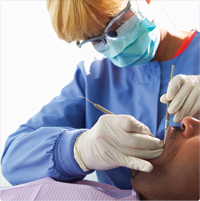Robotic Surgery for Oral Cancer Improves Outcomes
Robotic Surgery for Oral Cancer Improves Outcomes More cases of oral cancer are being diagnosed than ever, and sharp eyed dental hygienists are making some of these potentially lifesaving catches. After making a correct diagnosis, however, many clinicians may be
Robotic Surgery Improves Oral Cancer Outcomes
More cases of oral cancer are being diagnosed than ever, and sharp-eyed dental hygienists are making some of these potentially lifesaving catches. After making a correct diagnosis, however, many clinicians may be surprised to learn the diseased area will be treated by a specialist that is more metal and cable than flesh and blood.
Robotic surgery is now being used to treat many oral cancers. In fact, it has been used so effectively by head and neck surgeons at the Mayo Clinic that some patients are able to avoid additional treatment, such as chemotherapy and radiation, which can expose patients to unpleasant side effects. “We found patients had minimal trouble after surgery, in most cases resuming normal eating, swallowing and speaking,” reports Kerry Olsen, MD, Mayo Clinic otolaryngologist and senior author of a study that gauged the effectiveness of transoral robotic surgery (TORS) in the larynx.
Olsen’s team tracked nine patients, most of whom had advanced-stage disease, for up to 3 years after cancer tissue was removed. Treatment for this type of cancer must be performed in a narrow area beyond the tongue and at the top of the voice box that is difficult to access. Despite the delicate and cramped working space, throughout the study TORS performed effective cancer removal with “clean,” disease-free margins. The researchers also report that using TORS for the procedure was easier than treating the same type of condition with transoral laser microsurgery using a laryngoscope.
TORS delivers surgical treatment via robotic arms to which a camera, cautery, laser and gripping tool may be attached. A surgeon operates the system using a control panel and three-dimensional display of the surgical field to direct the instruments. Olsen notes that by using TORS surgeons improve their ability to maneuver and see around corners and into tight spaces. “We believe we’ll now be able to take out more throat tumors than with traditional approaches,” he concludes.
Source: Mayo Clinic


